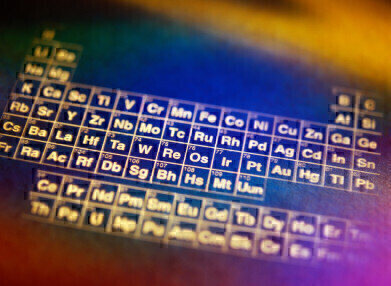Mass spectrometry & spectroscopy
Bringing Background Correction in AAS into the Foreground - a Brief Introduction
Jul 14 2014
Background correction is a process used in atomic absorption spectroscopy (AAS) to return more accurate results. Atomic absorption spectroscopy is an analytical technique used in chemistry to measure the levels of certain metals within a solution. It is frequently used in the fields of biophysics, toxicology and pharmacology. For example, AAS may be used to detect toxic elements in human blood or to measure metal content in water.
AAS can identify more than 70 elements. To do this, the sample (blood, water, pharmaceutical drug, etc.) is first converted into individual atoms. When it has been atomised it is then possible, using a detector, to see what light wavelengths (or radiation) it absorbs. Since every element absorbs a unique wavelength this is an effective way to highlight which chemicals are in the sample.
What is Background Correction and Why is it Needed?
A variety of background phenomena can interfere with the detector and influence the results. Known broadly as background absorption, issues like radiation scattering and molecular absorption can result in an incorrect measurement of the element content in a sample. Background correction is used to distinguish background absorption from elemental absorption, thus returning more accurate results.
There are many ways to correct background absorption - this article looks at two of the most commonly used methods.
1) Deuterium Background Correction
This is the oldest and most popular correction technique, but it is also the least accurate. It is effective in the wavelength range of 180nm – 320nm.
Two separate lamps are used to determine levels of background absorption; a hollow cathode lamp (HCL) and a deuterium lamp. When the HCL is on and the deuterium lamp off, the total absorbance is measured. When the reverse is performed (deuterium on, HCL off), just the background absorption is recorded. The background absorption is then automatically subtracted from the total absorption to give the correct atomic result.
Deuterium background correction does have its limitations, yet it remains the most frequently used and inexpensive method.
2) Zeeman-Effect Background Correction
This correction technique is used mainly in graphite furnace atomic absorption. It is advantageous because it corrects high background levels and it requires only one light source, eliminating the issue of alignment.
The Zeeman technique uses an alternating magnetic field to split the absorption line into three components. Like in the Deuterium method, total absorption is measured with the magnetic field off and background absorption with it on. The Zeeman technique is considered more accurate because it can detect any kind of background absorption. It is however much more expensive and there can be a loss in sensitivity.
Although both are widely used, there is some debate about the efficacy of these background correction techniques. For further information, read the article: Background Correction in AAS – Can You Really Trust It As Much As You Do?
If you are searching for an Atomic Absorption Spectrophotometer provide, take a look at the Labmate Buyer’s Guide.
Digital Edition
Lab Asia 32.2 April
April 2025
Chromatography Articles - Effects of small deviations in flow rate on GPC/SEC results Mass Spectrometry & Spectroscopy Articles - Waiting for the present to catch up to the future: A bette...
View all digital editions
Events
Apr 09 2025 Tokyo, Japan
Apr 22 2025 Hammamet, Tunisia
Apr 22 2025 Kintex, South Korea
Analytica Anacon India & IndiaLabExpo
Apr 23 2025 Mumbai, India
Apr 23 2025 Moscow, Russia



















